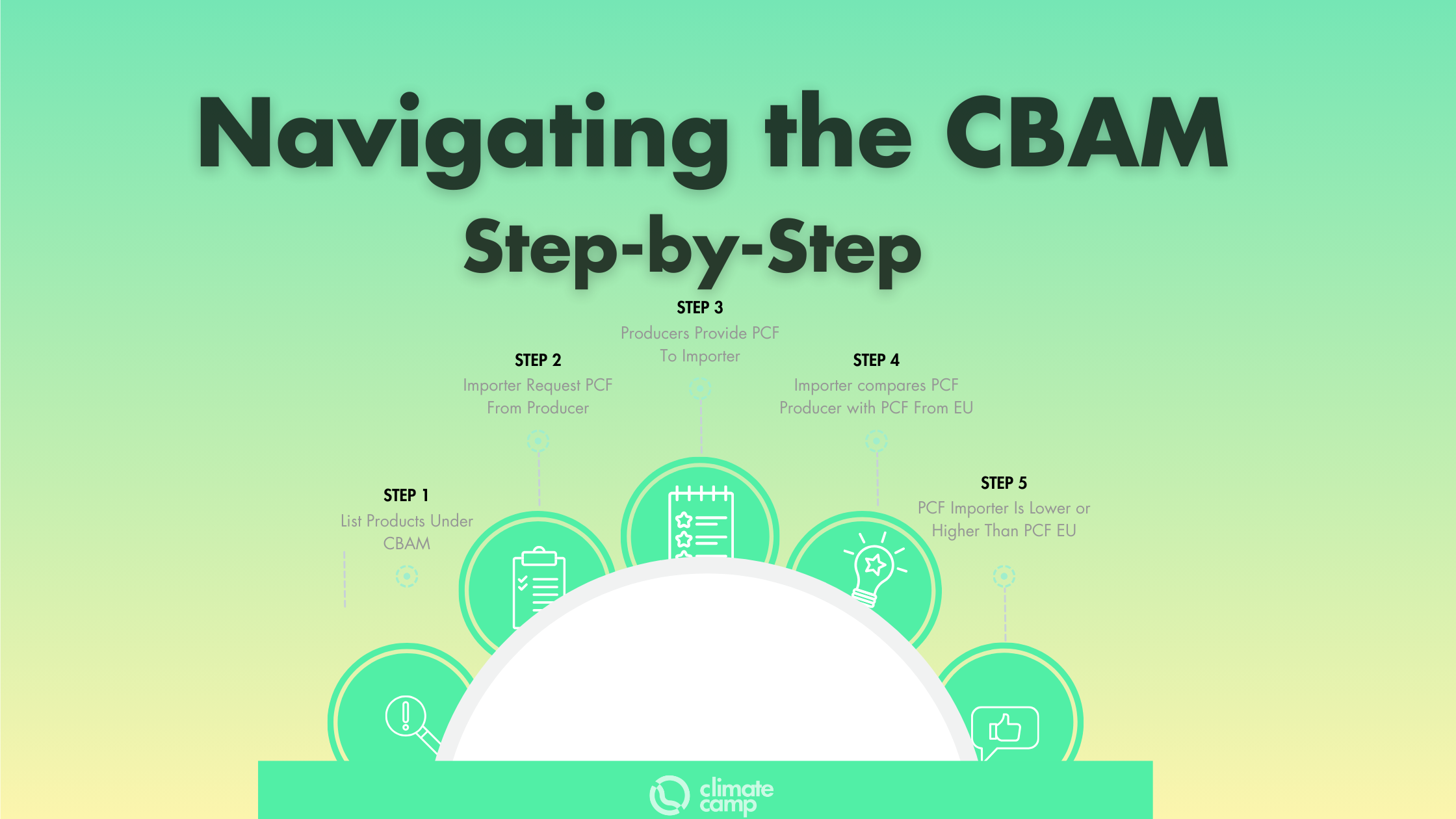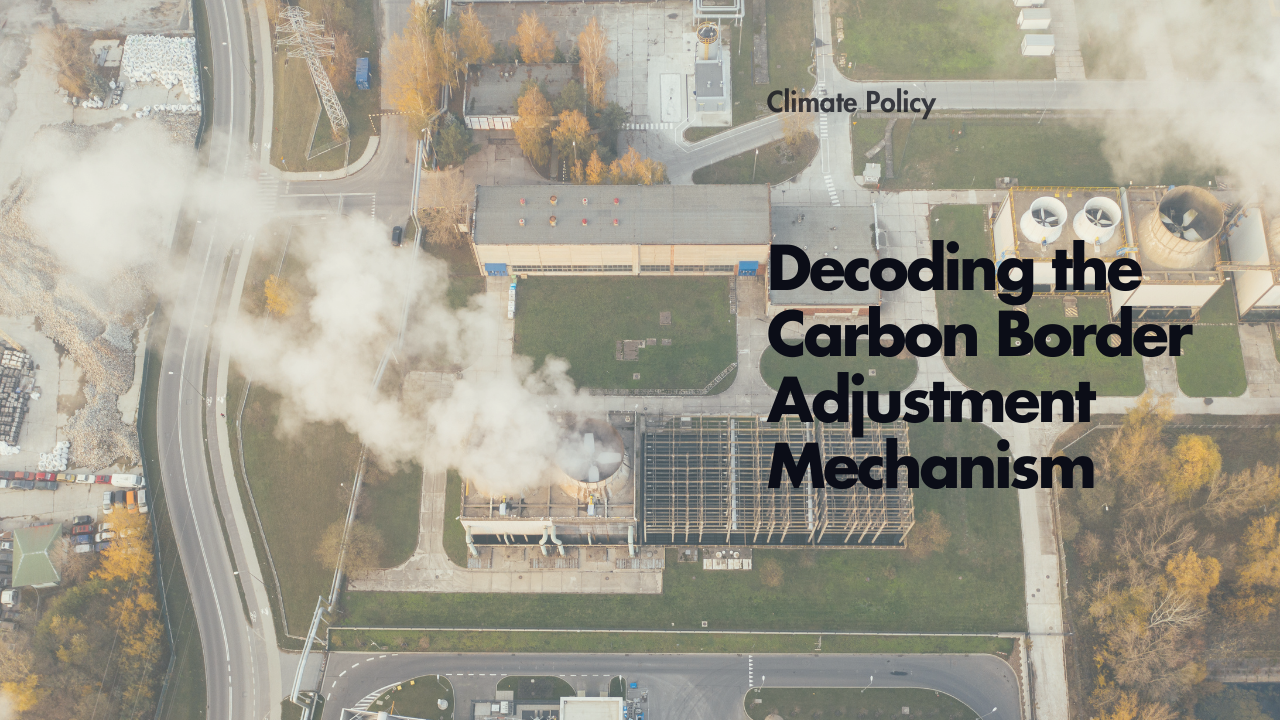What's behind the Eco-Score and how it will impact your decisions
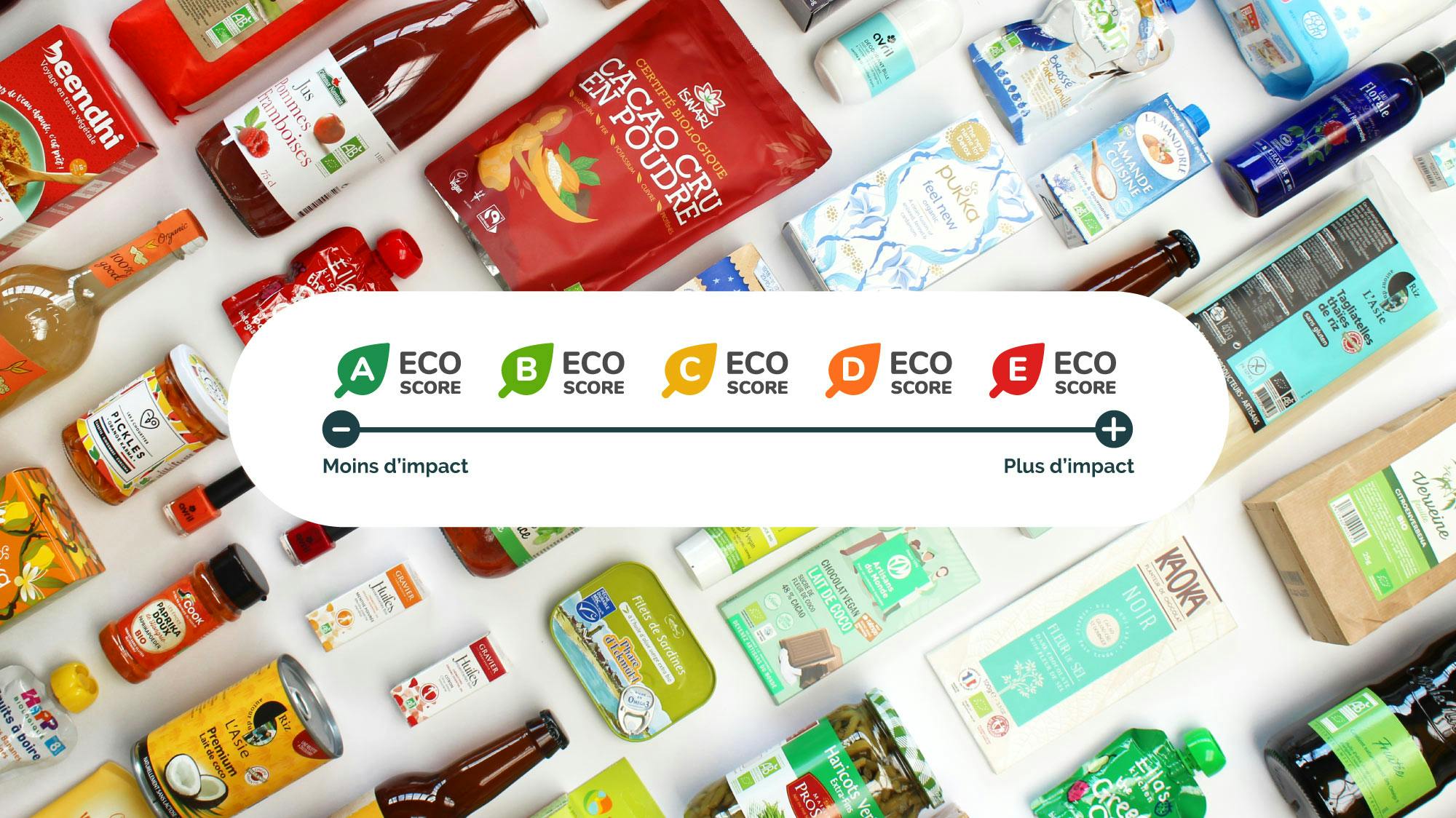
While the already popular “Nutri-score” is guiding consumers in choosing the healthiest option, the new "Eco Score" pushes people to mind the environmental impact of food, beverages and much more.
Discover the feature and the impacts of the two labels that will lead costumers’ choices.

In 2022, one third of global GHG emissions are proved to be linked with food: such scientific evidence together with costumers’ awareness on climate change inspired a strong initiative in the food and beverage industry, that, together with the Nutri-score, will change the way we look at products of all kinds.
Born in 2021, the Eco Score originated as an independent initiative of a consortium of important food actors (ECO2 Initiative, Etiquettable, La Fourche, Yuka, Food Chéri, Marmiton, frigo magic, ScanUp, Open Food Facts and Seazon) with the objective of creating a pedagogic labelling or tag that could highlight bad and good environmental performances of food producers.
To provide transparent information on commercial goods, the project entailed several independent sectorial experts, that together designed an impact-assessment scale ranging from A (light) to E (heavy).

The new Eco-score is in town: nothing will stay the same.
In order to display the complete environmental footprint of a product, from the production to its commercialisation, the indicator doesn’t calculate only CO2 emissions, but also other impactful factors that are as crucial to nature conservation as GHG emissions.
Some of them are:
- Ionising radiations
- Water pollution
- Resource depletion
- Land use
- Impact on biodiversity
- Marine eutrophication
- Acidification of rainfalls and ground water
- Mineral resource depletion
- Transportation system
How then are those factors calculated?
Since the cumulative impact per unit of food produced varies consistently depending on the type of product, the project experts created a set of environmental impact averages per category of product (e.g. “tomato sauce”, “mayonnaise”) exc.
Averages are created using the Product Environmental Footprint (PEF) metric, a scientific measurement methodology that tracks a product's impact from "farm to fork" , basing its data on the Life Cycle Assessment (LCA) tool, a scientific impact assessment tool.
Those factors allow the team to create points and award to awarded to each typology of products a score ranging from 0 to 100 which is then adjusted via “Bonus-Malus” points.
Bonus-Malus points can switch the final “scientific” rating up or down, adding or removing points. The points refer to impactful feature of products, like the sustainability of the production methodology, of its packaging, its origin and the biodiversity impact that the product had from the field to the shelf. that can be provided directly from the producer.

Bonus Malus rating close-up:
- A bonus from 5 to 20 points is given for the production system of the item: items with a "positive" label (like "organic", "bio", "rainforest" etc.) increase their rating depending on the quantity and type of labels.
- Based on the producing nations' environmental policies, bonus/malus points ranging from -5 to +5 are applied.
- A 0 to 15 bonus for food coming from local suppliers.
- Other 0 to 15 points for the sustainability of the packaging (use of recycled material, overpacking, possibility of circularity).
- Over 15 points can be detracted if the time impacts protected species or threatens endangered habitats.
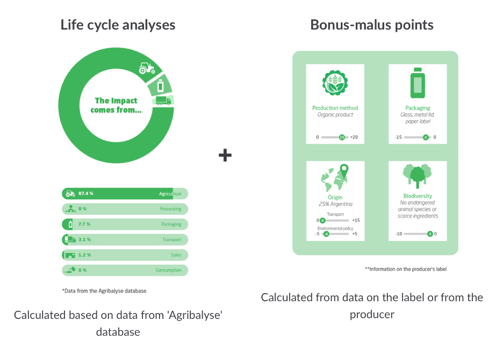 Rating mechanism. Source: Colruyt
Rating mechanism. Source: Colruyt
Where does the data come from?
Agribalyse, a database by the French Agency for Ecological Transition (Ademe) the French National Research Institute for Agriculture, and the France's National Research Institute for Agriculture, Food and Environment (INRAE), provides scientific data on the Life Cycle of products. The data are available to the public and editable from producers, who can add their own input on the packaging, transportation, growing techniques and innovations.

How does the Eco-score impact commerce and e-commerce?
The Eco-score, contrary to the Nutri-score, is applicable to all goods, from food and beverage to skincare or home products. It is important to notice that it will have a stronger and more invasive impact than the Nutri-score, both on market positioning and brand popularity. Indeed, an increasing number of retailers, like Carrefour, Colruyt, Lidl or Coop are starting to adopt this label, in order to show costumers their engagement for the planet and their transparency for costumer’s trust in their products.
Forbes (2022) highlighted how the percentage of Gen X consumers willing to pay more (+10%) for sustainable solutions skyrocketed from 34% to nearly 90% in just two years. The magazine also underlined that, according to Deloitte surveys, most consumers are aware of characteristics such as biodegradability (65%) and use of recycled packaging (60%), which make a product more sustainable. Despite this, 52% of consumers claim that they are still more inclined to prioritize durability above recyclability or biodegradability when making a purchase.
The eco-score will certainly change this tendency, providing an inescapable influence on the purchase. By answering costumer’s sensitivity on products transparency, printing the score on goods package will strongly contribute in pushing business to contain global warming below 2°C while coping with international climate agreements like the European Green Deal.
In fact, by wanting to meet consumer’s needs, businesses can leverage disruptive innovative mechanisms, which call for open green innovation.

What can you do as business?
The Eco-score mapping is an evolving system which is increasing its scope and scale.
In its growth, the Eco-Score is seeing the UK-based nonprofit organisation “Foundation Earth” collaborating with actors such as Danone, PepsiCo, Nestlé, Aldi, Lidl, Morrisons, Tesco, and Sainsbury to standardise the monitoring the evaluation of products. In this context, we can see how providing information on the environmental footprint of a commercial product is essential, but the relevance is not just on le label.
Clear data on a product emission can:
- Help the producer leverage critical factors to offset emissions through a comprehensive picture of supply chains and actors involved.
- Increase market positioning through a better product placement
- Increase consumers trust in a brand
- Give access to funds
- Ease the collaboration with sustainability-focused actors that can make a brand more competitive and innovate its business models
- Allow actors to notice processes that can be innovated or modified.
Sharing is caring! 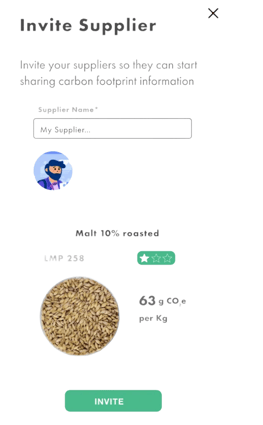
As it is for Bonus-Malus points, in oder to be reliable and accurate, products scoring need much information.
Sharing CO2 emissions and other important environmental factors is and will indeed increasingly become an indispensable feature for producers.
ClimateCamp.io is building the most complete and fast CO2 footprint dataset system ever, though which you can browse information about suppliers and retailers, add your GHG information, and analyze your benchmark performances and ambitions.
These tools will help us engage for a better future.
And you? How will the Eco Score affect your choices?
